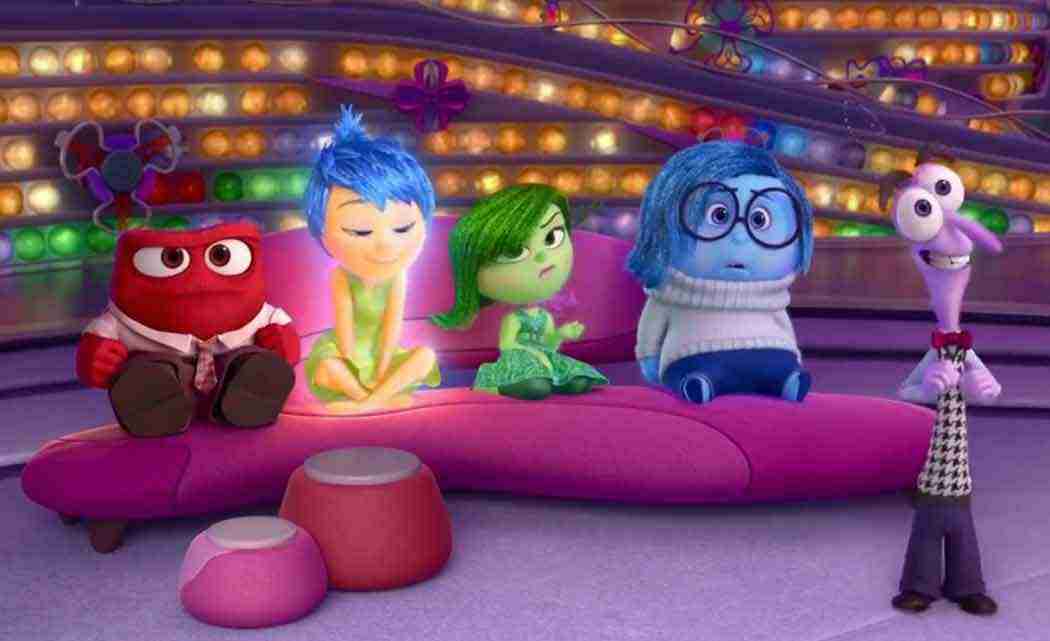By JAKE COYLE
AP Film Writer
Inside Out, the latest Pixar punch to the heart, navigates the labyrinth of a young girl’s mind in an antic, candy-colored romp through childhood memory to arrive, finally, gloriously, at epiphany.
By now it’s a familiar Pixar trajectory from wackadoodle to waterworks: We know it’s coming and we know there’s nothing we can do about it. The wave of tender nostalgia is going to crash down and wash us — happy, misty-eyed saps — out to sea, maybe with Nemo and Dora swimming alongside.
Those moments, sentimental and sublime, come in unlikely places: the sudden understanding of a forgotten toy, the astonished realization of a bitter food critic, the flashback of a grouchy old man. The epiphanies are almost invariably about giving into the natural course of life and time: An acceptance, a letting go.
Part of the magic is that even when out in space or in a rat-run restaurant, Pixar films stay earthbound. What’s most striking about “Inside Out” isn’t its inside-the-brain gee-whiz design, but that it’s probably Pixar’s most directly human story yet: An 11-year-old girl, growing up.
It’s an event observed and subtly manipulated by a gaggle of voices in the head of young Riley: Joy (Amy Poehler), an effervescent, pixie-haired burst of positivity; Sadness (Phyllis Smith), a blue-tinged, bespectacled mope; Anger (Lewis Black), a red block of fury; Fear (Bill Hader), a perpetually nervous squiggle; and Disgust (Mindy Kaling), a snobbish socialite.
From inside the “headquarters” of her head, the quintet have all watched Riley (Kaitlyn Dias) compile personality-forming memories, each of which rolls into headquarters like a glowing pinball, to be filed away accordingly in places like long-term memories or the more central “core memories.”
Things begin going haywire when Riley and her parents (Diane Lane, Kyle MacLachlan) move from Minnesota — the scene of her idyllic, hockey-playing youth — to a rundown San Francisco town house. Sadness begins creeping into her core memories; jeopardizing Joy’s previously unchallenged sunny supremacy.
In trying to prevent this scourge of unhappiness, Joy and Sadness get sucked into the recesses of Riley’s mind where they must find a way back through a maze of realms like Imagination Land and Dream Productions, a nightly movie studio of dreams.
The interior architecture is bright and clever — there’s literally a train of thought — but the psychology puns drag. Much of the mindscape adventures will surely sail over the heads of many younger viewers, while others will eventually tire of its Inception-like trip into the brain. (An exception is Bing Bong, an abandoned imaginary friend played by Richard Kind, who cries candy and seems created to prove how Pixar can make literally anything break your heart.)
Better is the tenderly depicted daily life of Riley as she struggles to adjust to a new school and city. Inside Out, directed by Pete Docter and co-directed by Ronnie Del Carmen, steadily builds in emotional power, aided massively by Michael Giacchino’s beautifully soft and sweet score (he also scored Up and Ratatouille).
Inside Out may be about a young girl but it’s really from a parent’s perspective — even the inside voices are guardians of Riley, adjusting as she matures out of childhood. As he did with Up, Docter has married a rainbow-colored palate with a gentle fable — mixing real and fantasy sometimes awkwardly but always with warm-heartedness.
What’s most refreshing about Inside Out is its inversion of the standard prescriptions of big-budget animation: It’s ultimately about the importance of embracing sadness. This, you may have noticed, isn’t exactly the conventional moral one generally finds at the multiplex.
But it’s a fitting lesson to be imparted by Pixar, a master juggler of emotion that has so often moved us with radiant bursts of feeling. Who better to remind us of the value of a good cry?













No Comment